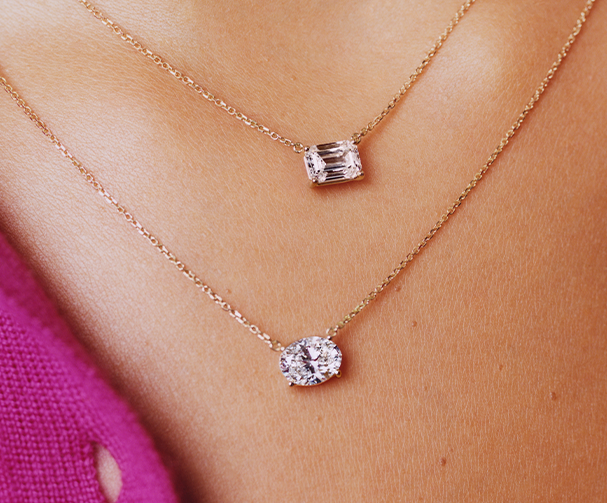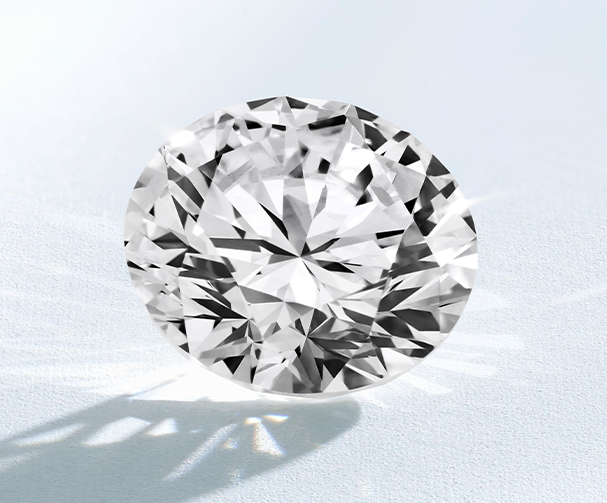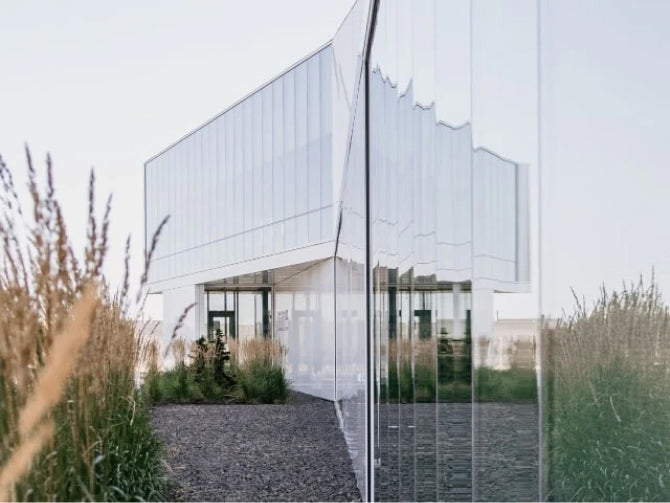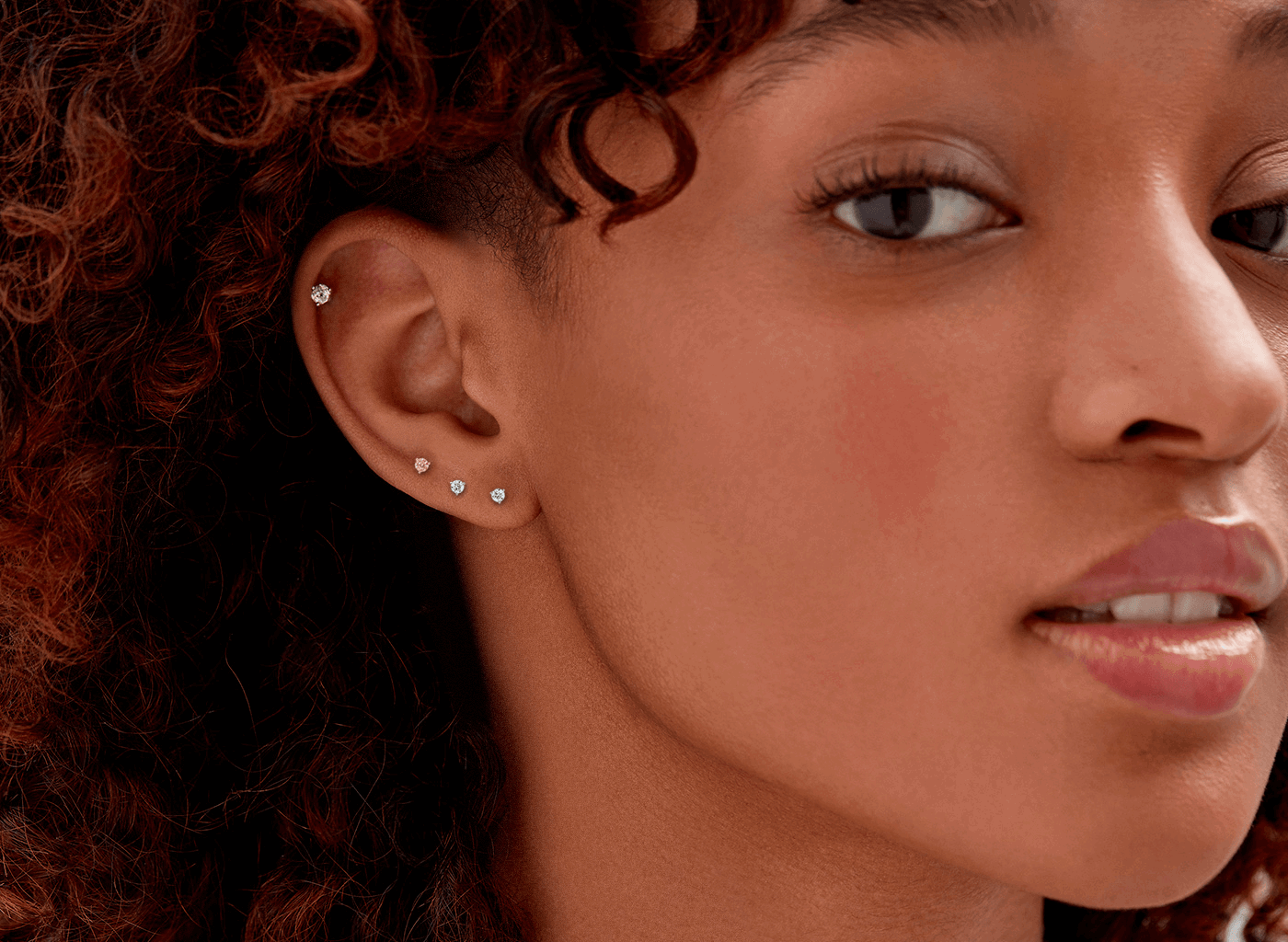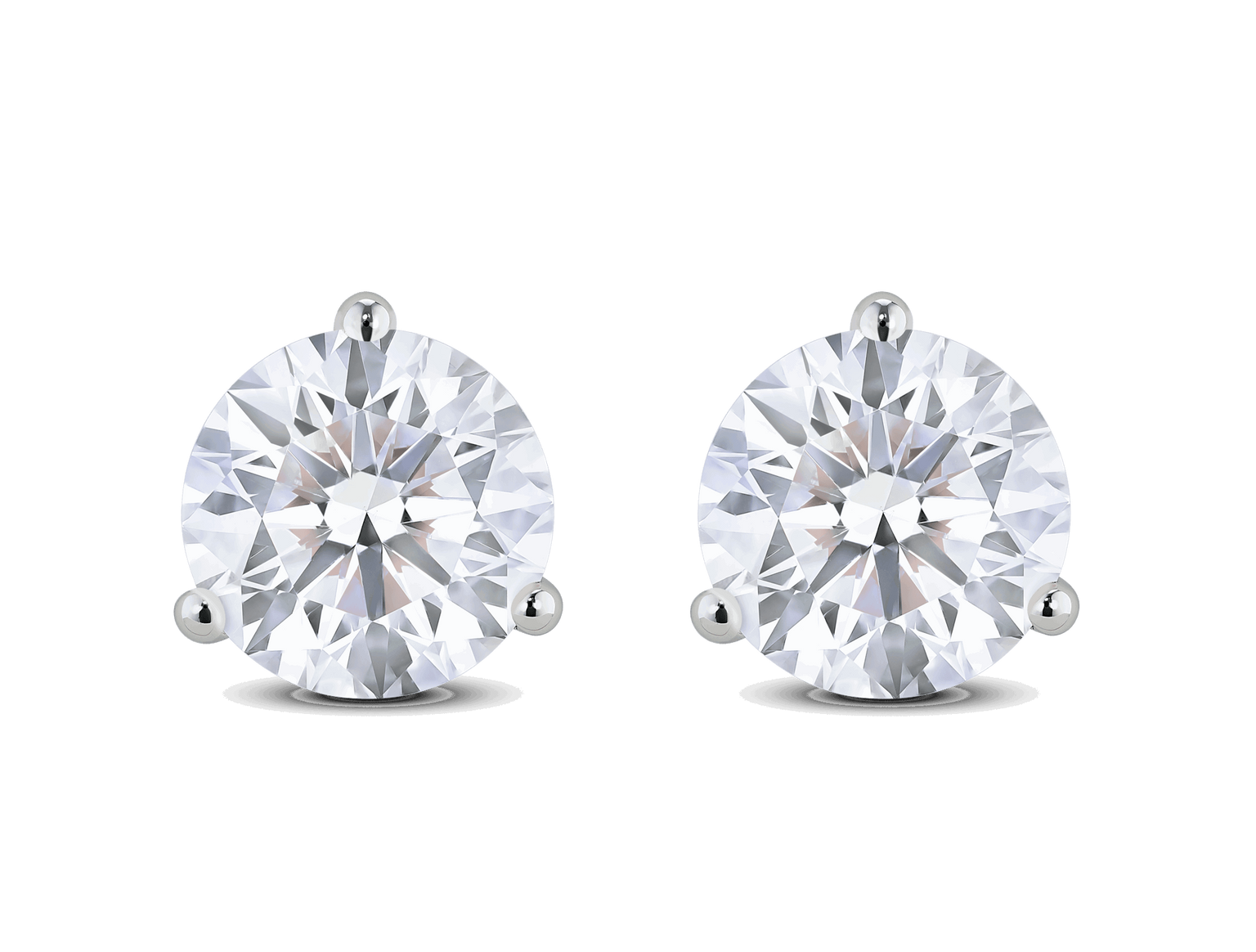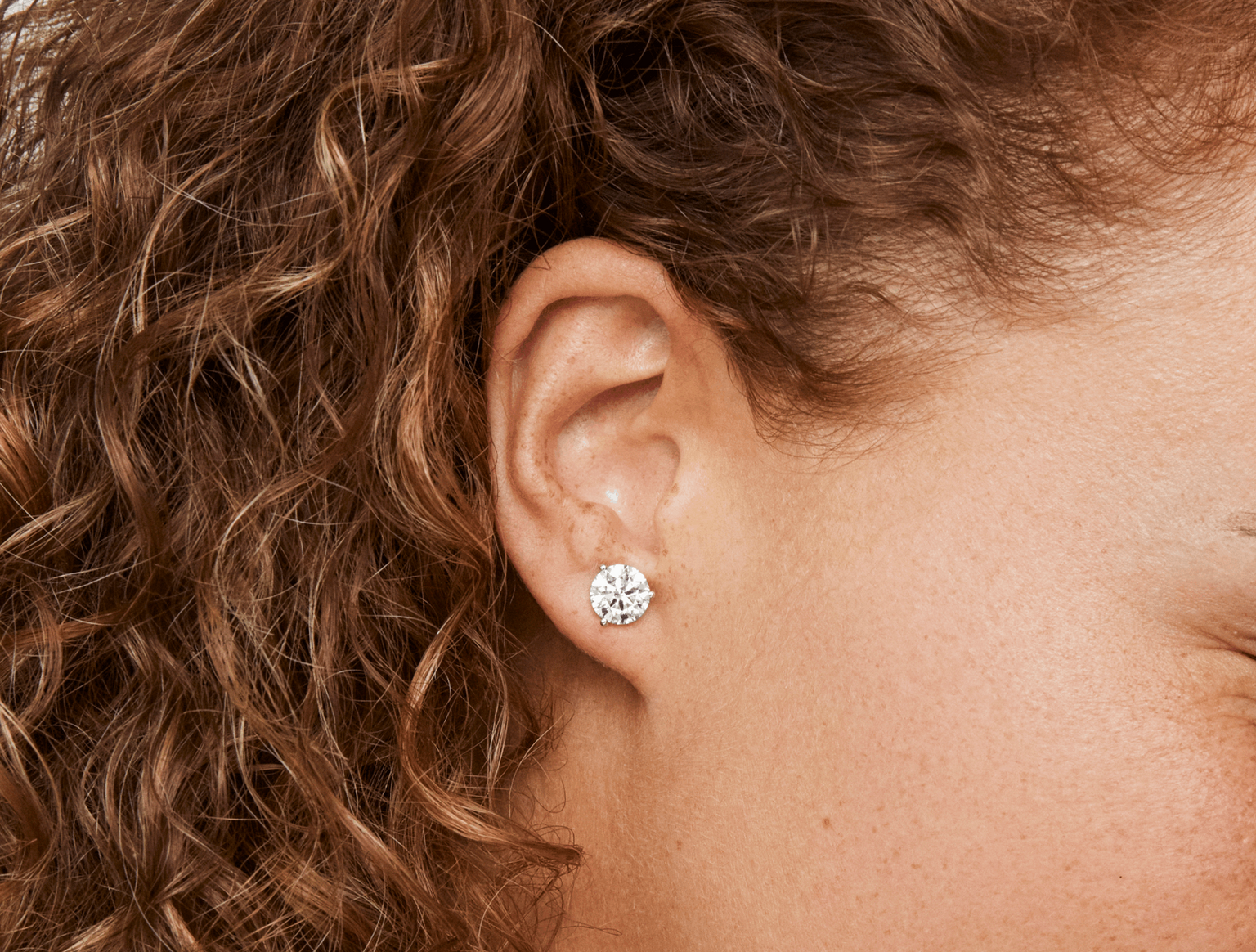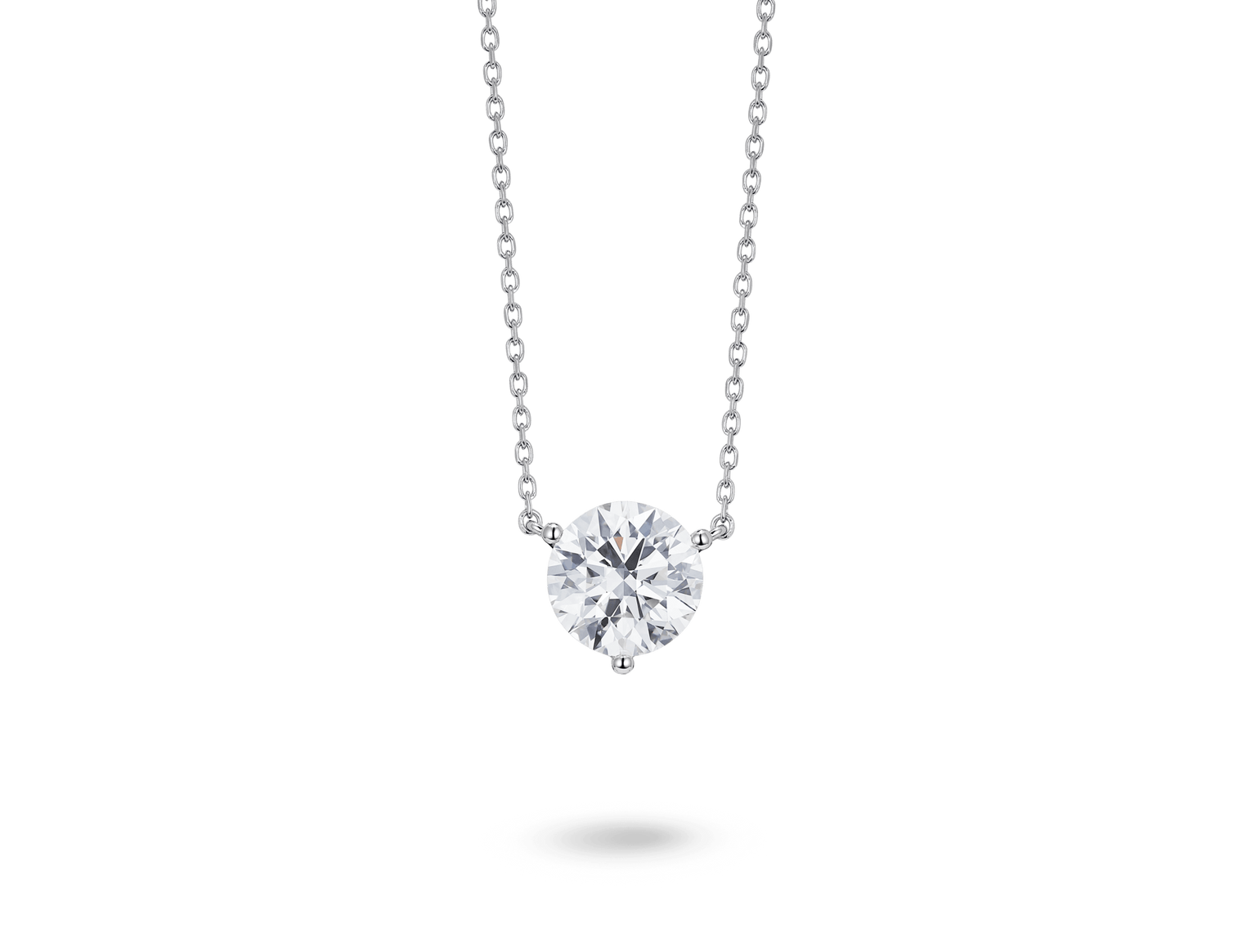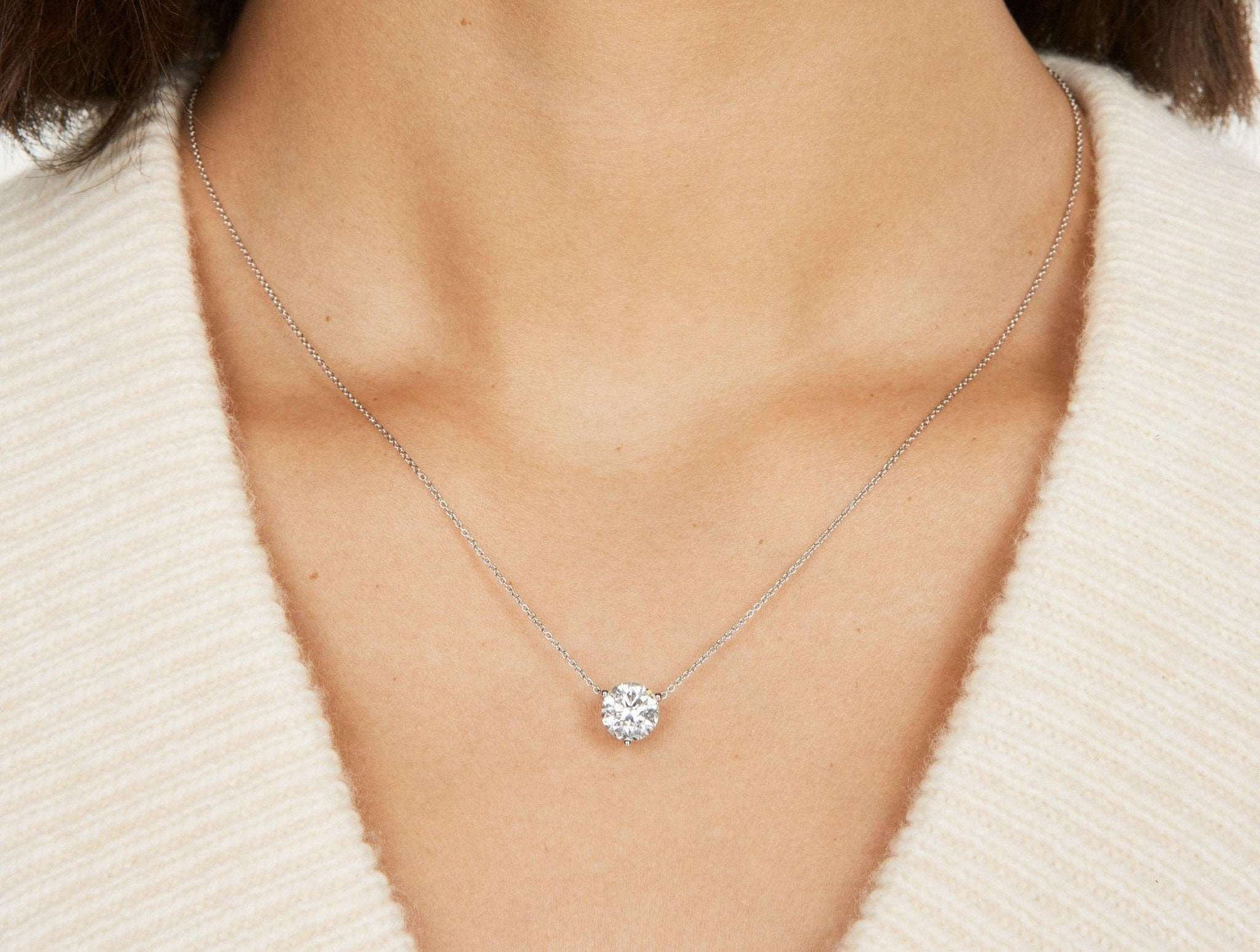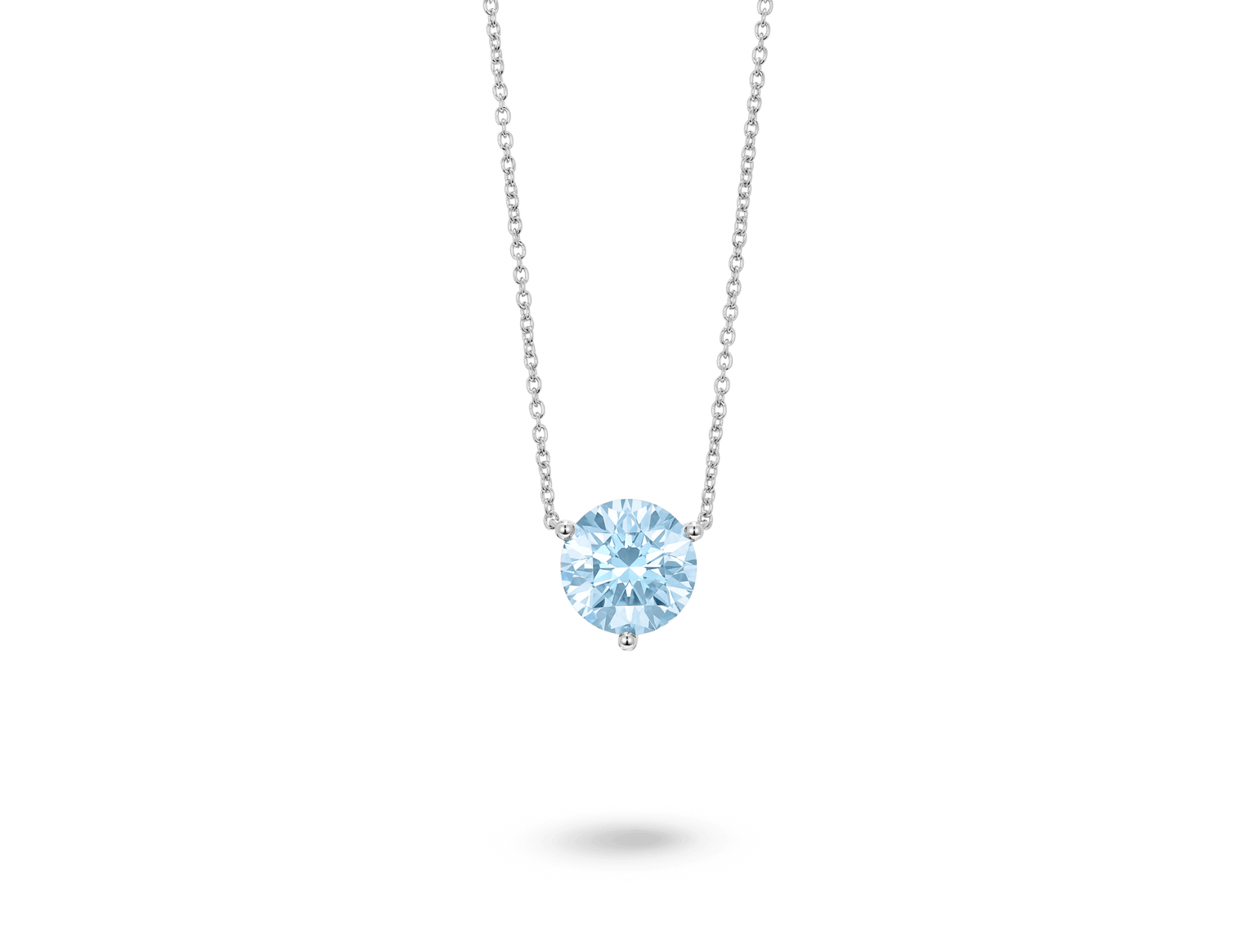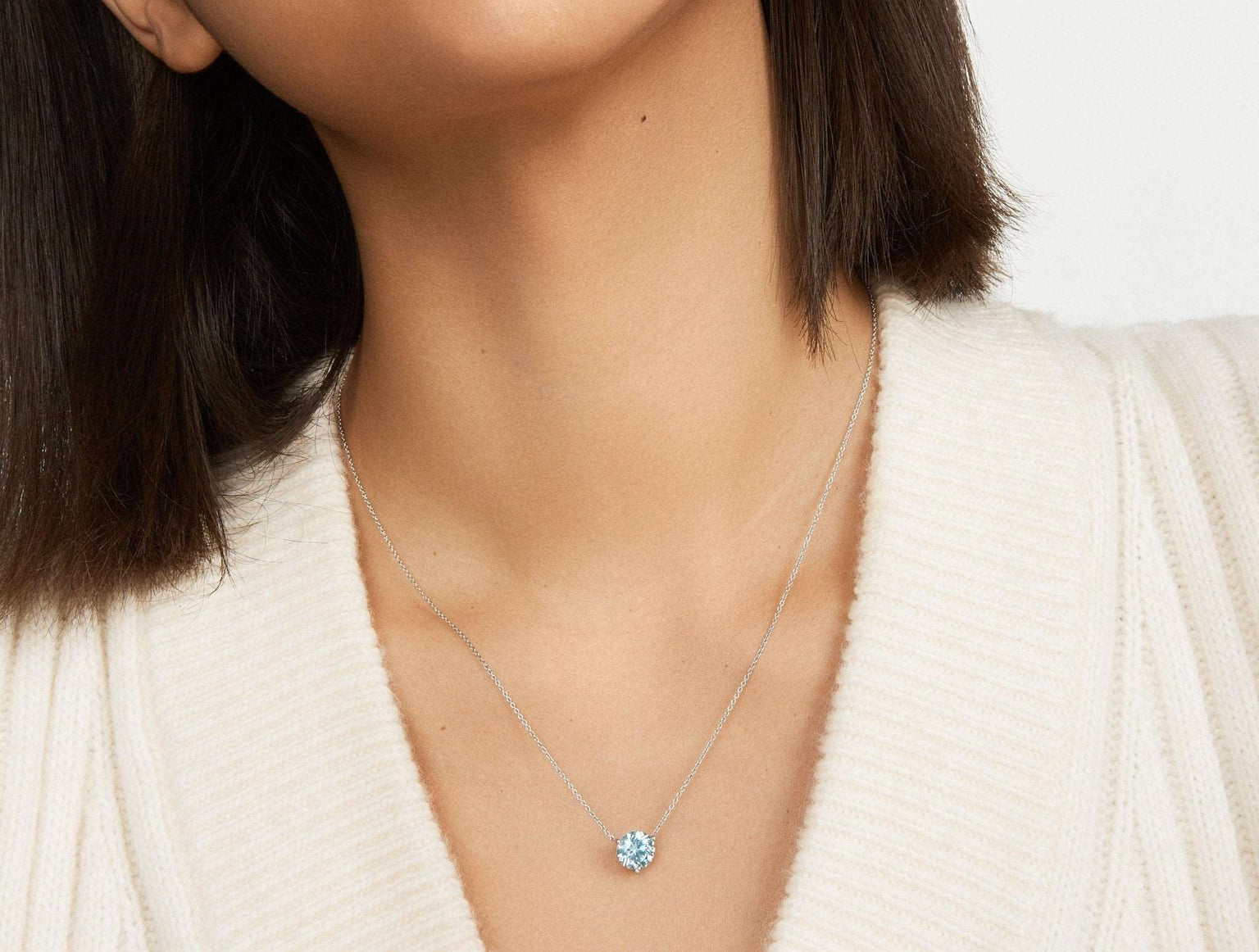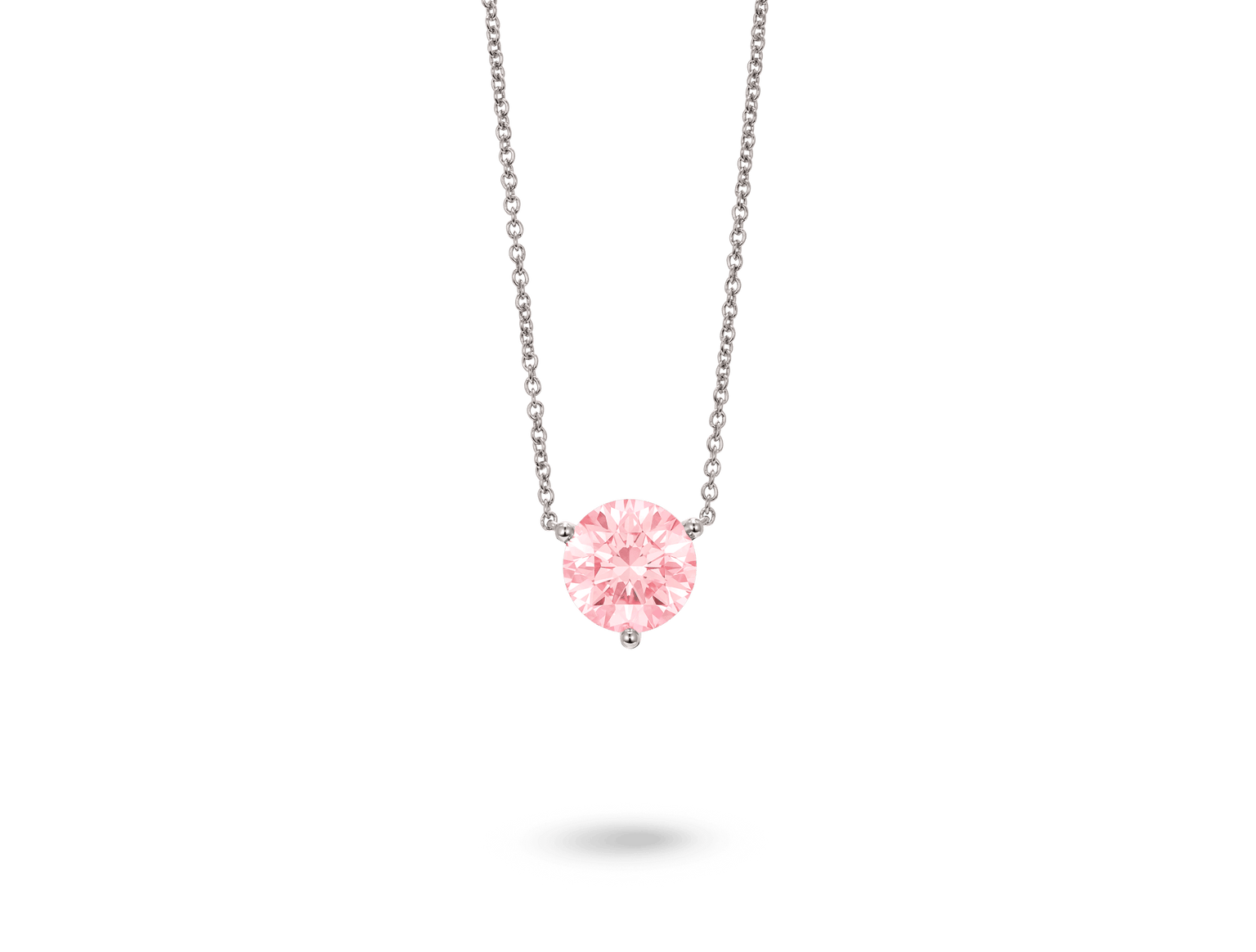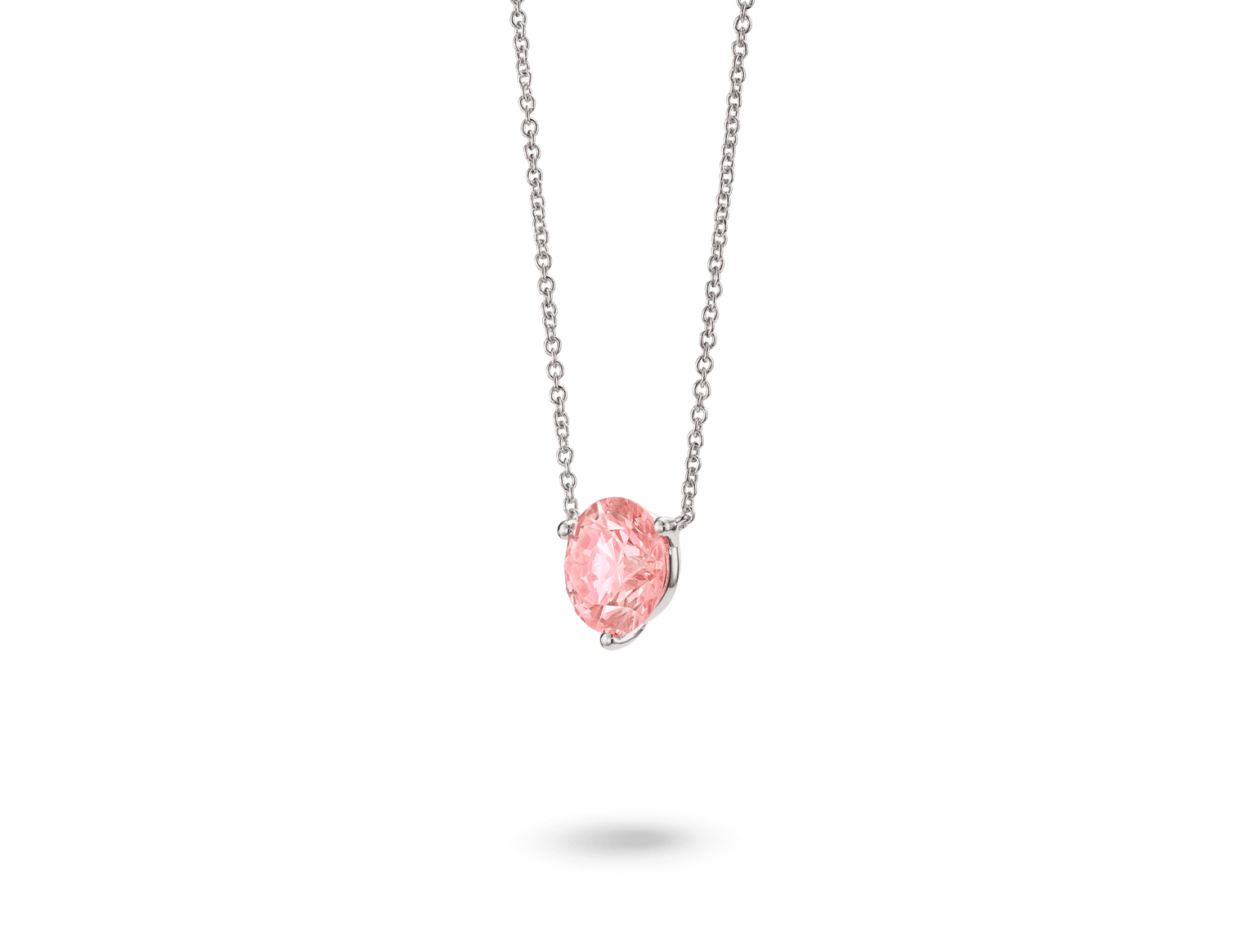Pink diamonds are more than just a pretty color; they’re one of the world’s most rare and highly coveted natural diamonds. This romantic shade accounts for one percent of the world’s natural diamonds, which drives their cost sky-high and explains why they are on the fingers of some of the most famous celebrities. But before you move on, thinking that pink-colored diamonds aren’t accessible for you, allow us to introduce ourselves. At Lightbox, we believe in transparent pricing and that diamonds aren’t just for special occasions. Our lab-grown diamonds start at 800 USD a carat (or 1500 USD a carat for our Lightbox Finest™ stones) and match the sparkle , strength, and optical properties of natural diamonds—and come in beautifully saturated pink and blue colors.
Ready to explore the world of pink lab-grown diamonds without the million-dollar price tag? Start shopping here and read on for more information about this coveted color, its origin, and styling advice.

What are colored diamonds?
Simply put, colored diamonds are a natural or lab-grown diamond with a hued body color rather than classic white diamonds.
Are pink diamonds real?
Yes, all colored diamonds are real in both their natural and lab-grown state. Just like with white diamonds, lab-grown diamonds share the same chemical makeup as natural diamonds, and they are optically identical. The biggest differences between natural and lab-created diamonds are how they’re made and their rarity. When it comes to colored stones, it is that rare quality in natural stones that drives the price higher.
Colored Gemstones vs. Colored Lab-Grown Diamonds
Colored gemstones are great for costume jewelry and are commonly found in trendy multi-colored diamond rings and earrings. Adding brightly-hued accessories is a great way to express your mood or personal style. However, there is a difference between colored gemstones and colored lab-grown and natural diamonds. Colored diamonds made in a lab, like the ones at Lightbox, retain the quality of a diamond—like the eye-catching scintillation, fire, and sparkle—that is unmatched by a gemstone. This is the major point of difference between colored diamonds and colored gemstones.
If you’re interested in learning more about how simulated diamonds compare to natural and lab-grown diamonds, check out this guide.
What is a pink diamond?
A pink diamond is a fancy colored diamond with a pink hue.
In nature, pink diamonds are among the most valuable and rare diamonds on the planet, with vivid-colored stones regularly costing £2.00 million USD per carat at auction houses. (For that price, you could buy 2,500 one carat Lightbox pink lab-grown diamonds...just sayin’.) The price tag is associated with their rarity, as only a tiny percentage of natural diamonds have a pink color, and only a fraction of those pink diamonds have a highly covetable rich, vivid color.
Why are Pink Diamonds Pink?
Researchers at GIA believe that 99.5 percent of all natural pink diamonds come from a distortion of the diamond’s crystal structure. Trace elements, like nitrogen and boron, cause diamonds to become yellow and blue, respectively. The mystery around their color origin in the natural state only helps to drive the appeal and price.
Famous pink diamonds
Celebrities who love a rare pink diamond include Blake Lively, Mariah Carey, and Victoria Beckham, who have worn pink diamond engagement rings. When Jennifer Lopez and Ben Affleck announced their engagement, the singer-actress-fountain of youth debuted a 6.1-carat pink ring—and now that the internet’s favorite couple is back together, we’re hoping to see that stunning bauble back in action soon.
But it’s not just Hollywood’s A-list who loves a pink diamond. Royals around the world collect and wear this rare color. The Daria-i-Noor pink diamond, also known as the Sea of Light diamond, is part of the crown jewels of Iran and could double as a very, very expensive paperweight since it clocks in at 182 carats.
England’s Queen Elizabeth received the Williamson Diamond as a wedding gift in 1947 and had it set into a brooch a number of years later. While a pin isn’t our choice of styling for an amazing diamond (we’re partial to big earrings), we say you do you.
Lightbox colored lab-grown diamonds
According to GIA, only 1 in 10,000 natural diamonds has a fancy color. This rarity drives the price up and up, which is why many people have turned to lab-grown diamonds that consistently produce gorgeous colors in a marketable quantity without the sticker shock. We love the idea of bringing the sparkle of a diamond to more people for any occasion.
Lightbox colored lab-grown diamonds come in a variety of shapes, like a classic round brilliant, cushion, and princess, and they’re available in icy blue and blush pink. In addition, each Lightbox stone is beautifully saturated and tonally aligned, allowing for jewelry stacking and curating a collection of your favorite colored stones.
To learn more about Lightbox blue lab-grown diamonds, check out our full guide.
How Does Lightbox Make Colored Diamonds?
Lightbox colored lab-grown diamonds are grown in the same facility and with the same precise process as our white lab-grown diamonds. We achieve the saturated blue and pink shades by making intricate changes to the gas mixture that is pumped into the CVD reactor (that’s the machine that grows the diamonds from seed). In nature, diamonds take millions of years to form, but our scientists can grow a one-carat diamond in about two weeks. Once the growing process is complete, a post-growth enhancement is applied to the colored stones and then it is sent for cutting, polishing, and finally hand-set into earrings, rings, necklaces, and bracelets. After our quality control inspectors review each piece, checking to ensure the prongs are secure and the metal is polished to a shine, the jewelry is ready to be sold, styled by you, and worn with everything.
How to style pink diamonds
Our lab-grown pink diamonds are commonly set in either 14- or 10-karat rose gold, or 10-karat yellow gold. The pink tone of the rose gold metal complements all skin tones and, when used to hand-set a lab-grown pink diamond, creates a “classic with a twist” look that’s highly sought-after. Choosing to pair a lab-grown pink diamond with yellow gold adds a hit of yellow that really pops against the saturation of the pink stone.
Are colored diamonds more expensive?
When it comes to diamonds, rarity impacts the price.
Natural and lab-grown diamonds in the D-to-Z range decrease in value as the color goes up, with the most coveted and expensive stones in the colorless range. The opposite is true of fancy colored diamonds, where a rich, pure hue means a higher price tag. A good example of this IRL is a canary diamond. A vibrant yellow will be significantly more costly than a muted stone.
When you’re considering a natural colored diamond for your next piece of jewelry, the rarest and most valuable colors are saturated pinks, blues, and greens. In all cases, even very slight color differences can have a big impact on value.
Lab-grown diamonds have the benefit of consistency with coloring and the added perk of being less rare than natural diamonds. This helps our 800 USD pricing per carat model operate successfully, allowing colored lab-grown diamonds to be a part of your everyday styling.
To learn more about other colored diamonds, read our guide to blue diamonds here.
